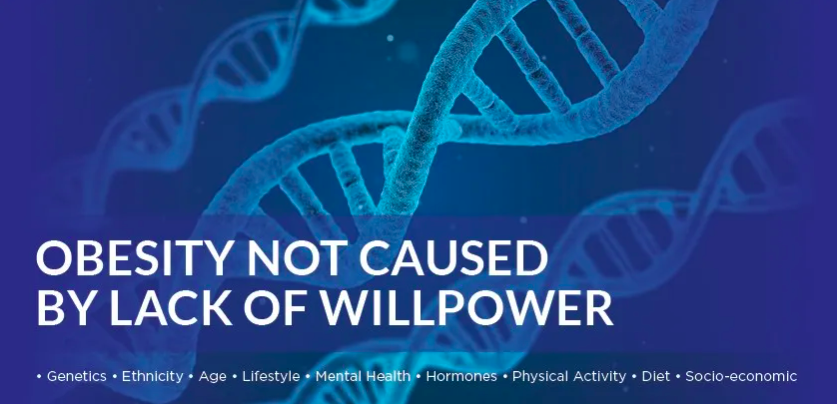Take a bite into Bernadette’s hot take that, maybe, it is not entirely our fault that we’ve gained a few pounds over the past years.
In this day and age, discussions regarding obesity and malnourishment are something that we are not foreign to. Compared to the 1960s, the number of obese individuals has unfortunately tripled (as per the data retrieved in 2016). This is a jarring statement as, at the same time, there are still more than 800 million people malnourished globally. These opposing numbers are a strong enough argument for people to start questioning what exactly causes obesity. Should we solely blame the food we eat — as simple as that? Perhaps there is a more obscene answer, something deeper than our skins?
One can try to blame their ancestors for their obesity — specifically their genetics. There are many components that build genetic components. However, the two that are highlighted in this essay are the phenotypes and genotypes. A few years back, a hypothesis was coined that there is more than a single type of phenotype and genotype in the world and that the global population can be found having the thrifty phenotype or the thrifty genotype.
According to the “thrifty phenotype” notion, a malnourished fetus will modify its metabolism to increase its chances of survival. It is also asserted that its adaptations are useful over the long term only if the individual is kept in a low-nutrient environment; otherwise, they are said to be harmful. On the other hand, the “thrifty genotype” is a collection of adaptations that enable an organism to quickly store fat during periods of food excess, giving it a survival advantage during periods of food scarcity and famine. In 2012, JC Wells quoted a concept called the obesogenic niche in his journal. This concept elaborates how the cycle of human growth is affected by the external and environmental factors that together lead to excessive weight gain. Therefore, the genotypes and phenotypes hypothesis are related. So when there is a change of condition, the phenotype theory says that it will be harmful and make the person gain more weight because of the environmental factors along the human growth cycle.
In the same essay, Wells also referenced how capitalism is an economic system that strives to make as much profit at the expense of individual health. As a result, even though so many people work continuously, their salaries cannot provide them with nutritious food. It has carries on the sad tradition a generation’s malnourishment, and their body metabolism starts to adapt to the environment to create fat reserves and keep them, creating the next generation with a higher risk of becoming obese in a rich food environment.
As stated by Wells, this pattern is called the “metabolic ghetto”, which is the main cause of obesity globally due to capitalism. The longer the cycle goes on, there will be a higher risk for the following generations to become obese due to these factors. In short, due to the unfair working conditions and payment systems of the global’s workforce, as well as the cheaply-priced junk food, capitalism has forced us into living a life with bad dietary habits.
Reflecting on Wells’ deliberation, one might start to see that there is more to obesity than what meets the eye. Perhaps being overweight or obese has less to do with willpower than the obesogenic presence we live in. However, there is still a widespread tendency to judge obese people as lacking willpower or not being in control of their bodies. The lack of information regarding the obesogenic niche and capitalism creates a generation with a higher risk of getting obese. Moreover, I believe people tend to judge others because society informs people that they are overweight because they do not exercise frequently and always consume bad foods. In the end, the image of a slim and fit body is something people are fighting for by calculating their diet and working out often.

References
FAO, IFAD, UNICEF, WFP and WHO (2021). The State of Food Security and Nutrition in the World 2021. Food and Agriculture Organization of the United Nations: Rome, Italy. https://www.fao.org/state-of-food-security-nutrition/2021/en/#:~:text=The%20number%20of%20undernourished%20people,world%20faced%20hunger%20in%202020.
Wells J. C. (2012). Obesity as malnutrition: the role of capitalism in the obesity global epidemic. American journal of human biology: the official journal of the Human Biology Council, 24(3), 261–276. https://doi.org/10.1002/ajhb.22253
World Health Organization (2021). Obesity and Overweight. Fact Sheet. World Health Organization: Geneva, Switzerland. https://www.who.int/news-room/fact-sheets/detail/obesity-and-overweight#:~:text=Key%20facts,over%20650%20million%20were%20obese.

Created by : Bernadette Michelle Loan
Bernadette Michelle Loan is majoring in Business Administration at Parahyangan Catholic University. She was one of the IISMA Awardee who went to Yonsei University in Spring 2022.
